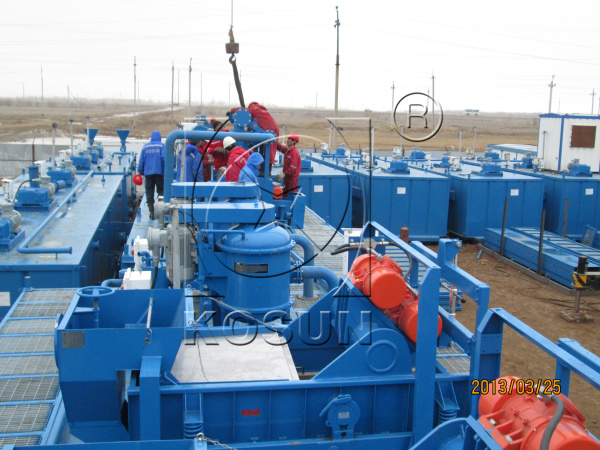Mar 18, 2014
Shale gas has a complex composition of minerals, extending to such common ones as kaolinites, montmorillonites, illites, as well as quartzs, feldspars, mica calcites, dolomites, iron pyrites, apatites, etc. Water easily smells clay minerals. This can hinder normal drilling, result in complicated down hole problems like collapsing wall as well as pollute drilling fluids and impact capacity in later production. Mostly due to this, oil-based mud is required.
Vertical well can try water-based mud, but it is less economical than horizontal wells for extracting shale gas. Horizontal drilling is always used for shale gas exploration, mostly along the direction of minimum principal stress, which makes shale formation proner to collapse than ever. Oil-based mud is endowed with better capabiliy to stablize the wall than water-based mud.

1. Water-based mud can swell shale formation, a brittle mineral, collapse boreholes and impact drilling outcome in the drilling operations;
2. Gases produced among shale cracks whose non-organic part is possbly aqueous wetting phase can be easily displaced by water, offsetting the well loggings.
3. Water-based mud can easily block the layers of very low permeability and influence the capability.
4. Oil-based mud can support the shale formation and its oil molecules cannot penetrate into tiny organic and non-organic pores under the capillary pressure.
Accordingly, it makes great difference to drilling operations with the assistance of the oil-based mud, concocted with certain amount of support agent. And, in horizontal drilling, rotary steering, hole trajectory and well cementing are vital technologies, or an integrated auxiliary technology assembly.
Drilling mud plays an vital role in balancing formation pressure, lubricating and cooling bit on drilling processing. Due to its high cost and severe pollution to local environment, circulation utilization of drilling mud has been adopt by most of drilling companies. But, when pumped from downhole, the drilling mud carries massive solids that mainly consists of cuttings from crushed rocks and bentonite and barite added for better performance. What’s more, the solids-removal effect will exert a direct influence on mud property and drilling safety. According the contribution to drilling mud, the solids can be classified as useful and unuseful particles which mainly contains drilling cuttings. Excessive massive solids will increase pressure more than formation pressure, and drilling mud will permeate into strata while fine particles will enter into oil channel which results in blockage causing damage of oil reservoir.
How to remove cuttings from drilling mud? It relates to oilfield solids control equipment. Oilfield shale shaker can ensure that drilling fluids can be recycled so as to be reused. Actually shale shaker is just a part of solids control equipment for drilling mud system. In order to make sure the excellence in drilling mud cleaning process, shale shaker is used together with other parts of drilling processes. Drilling fluids consists of water, oil and some chemical materials. How to reduce them? Apart from drilling shale shaker, vacuum degasser can be used. It is used later than the shale shaker, but earlier than mud cleaner and drilling mud decanter centrifuge.